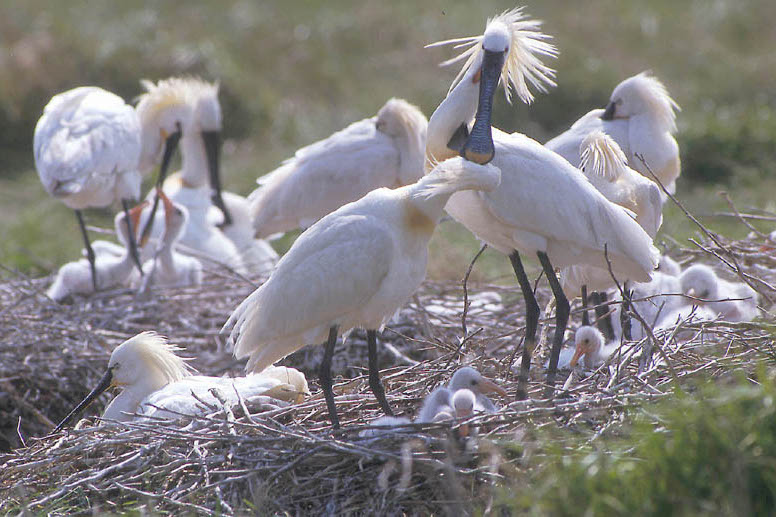Spoonbills breed on islands, in dune valleys and on saltmarshes, and on the mainland preferably in marshes with a lot of reed and fluctuating, natural, water levels. They usually breed on the ground but are increasingly observed breeding in bushes and trees.
Most spoonbills in The Netherlands lay their eggs between April and June, although some freshwater colonies are earlier. They have one clutch per year of 2-5 eggs that are incubated for about 25 days. Spoonbills start incubating after the 1st or 2nd egg is laid, causing the eggs to hatch asynchronously. Spoonbills usually breed in mixed colonies with herons, cormorants, geese and/or herring or lesser black-backed gulls. The aggression of these species helps protecting the colony from predators, as spoonbills are hardly able to defend themselves due to the shape of their bill.
Chicks are able to fly after 6-7 weeks. After fledging, the juvenile spoonbills stay close to their parents for while, to beg for food and to learn where and how to search for food by themselves. It takes 3 to 4 years for a spoonbill to become sexually mature. Photo: Spoonbills preening on a nest with chicks.

Spoonbills preening on a nest with chicks - Photo: Paul van Gaalen

